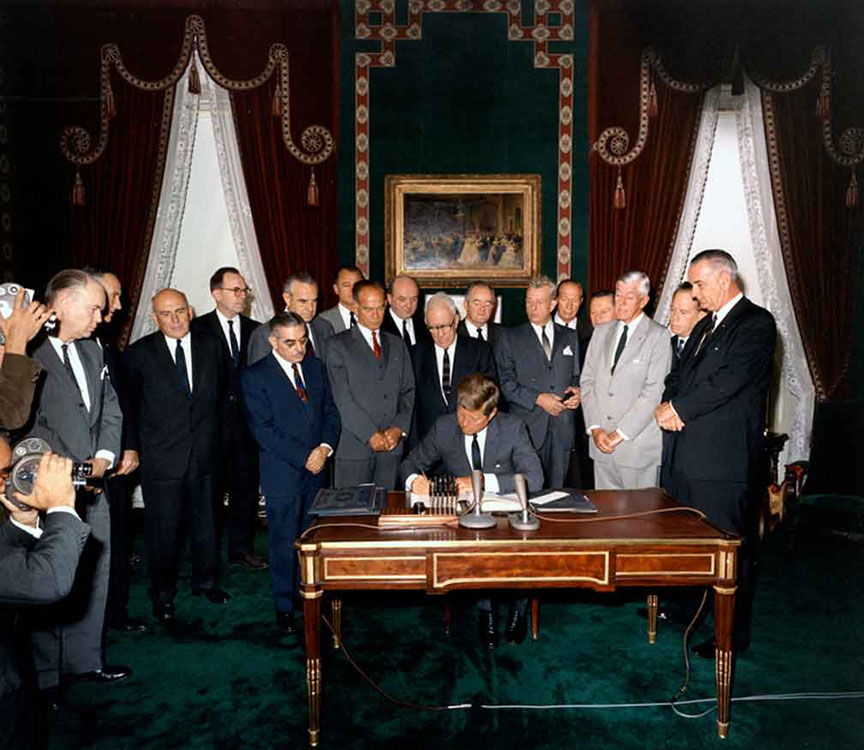Test Ban Treaty 1963

JFK Addressing the Naiton
The Senate ratified the first test ban agreement between the United States and the Soviet Union on October 10th. The treaty banned the above-ground testing of nuclear weapons.
From the moment the Atomic bomb was first used there were attempts made to limit both its testing and its proliferation. in light of the mistrust between the United States and the Soviet Union it was difficult to make any progress on the matter. In May 1955 the United Nations Disarmament Commission brought together the United States, the Soviet Union, France, and the United Kingdom met to discuss ended testing. While they could not reach an immediate agreement both the United States and the Soviet Union agreed to suspend testing from November 1958 to September 1961.]
By 1959 as trace radiation was found in wheat and milk in the United States, it started to become clear that testing of atomic bombs in the atmosphere had consequences. President Kennedy had been opposed to testing, believing that banning testing would make it more difficult for other countries to obtain weapons. In the 1960 campaign, Kennedy strongly opposed testing. He.pledged to not to resume testing in the air and do his best not to resume underground testing. When the Soviets resumed testing in August 1961, the pressure grew on Kennedy to resume testing. This was especially acute after the Soviets tested a 58 megaton bomb. After failing to achieve an agreement to stop testing, Kennedy agreed to resume testing on April 1962.
The Cuban Missile Crisis effected both Kennedy and Khrushchev. Kennedy stated in a meeting "It is insane that two men, sitting on opposite sides of the world, should be able to decide to bring an end to civilization.”. Kennedy gave a speech in June 1963 at American University where he announced a new round of talks on reaching an agreement to end testing. On July 25, 1963, the Soviets and American reached an agreement. President Kennedy announced it the next day.
The Senate confirmed the treaty by 80-19 and President Kennedy signed it on October 7, 1963
 >
>